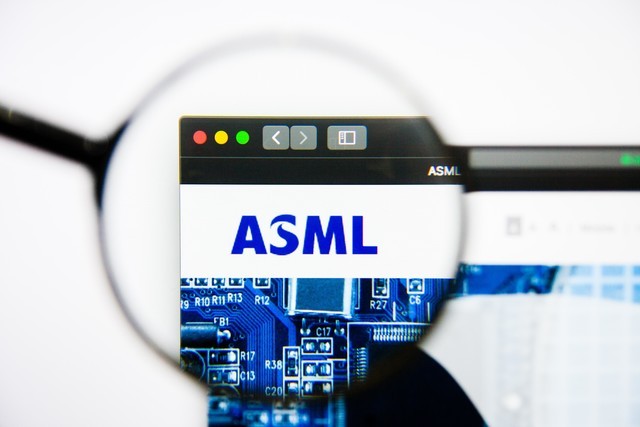ASML's 2024 Q2 Earnings Analysis: Growth and Challenges Driven by AI
The rapid advancement of artificial intelligence (AI) technology has fueled an increasing demand for high-performance chips, propelling the market demand for advanced chip manufacturing equipment, especially high-end lithography machines. The lithography giant ASMLdemonstrated its performance and future outlook under this trend in the latest Q2 2024 earnings report.

Performance Overview: Growth Beyond Expectations
ASML achieved a net sales amount of €6.24 billion in the second quarter of 2024, exceeding the company's previous forecast of between €5.7 billion and €6.2 billion. Although net profit decreased by 18.7% year-on-year to €1.58 billion, the decline narrowed compared to the previous quarter. In addition, the total order amount surged to €5.57 billion, a year-on-year increase of over 24%, with €2.5 billion from the Extreme Ultraviolet Lithography (EUV) system.
In the net system sales, EUV sales accounted for €1.5 billion, and non-EUV sales for €3.3 billion. The logic business contributed 54% of the net system sales, while the remaining 46% came from the storage business. This indicates that ASML has maintained robust growth in both main business areas.
Market Dynamics: Continuous Leadership of Mainland China
The Mainland China market accounted for as much as 49% of ASML's sales, becoming its largest market for four consecutive quarters. Despite facing the impact of external controls, the revenue share of the Mainland China region remains firmly at the forefront, showing strong customer demand for mature process chip production equipment.
Technical Progress: Continuous Evolution of Lithography Technology
As semiconductor technology nodes continue to evolve, the importance of lithography technology is becoming increasingly prominent. ASML successfully delivered a new batch of NXE:3800E systems to customers in the second quarter and is steadily advancing capacity enhancement plans. At the same time, progress has also been made in the field of 0.55 High Numerical Aperture (High NA) EUV lithography systems, with the delivery of the second device to customers.
Future Forecast: Prudent Expectations and Long-Term Growth
ASML expects the net sales for the third quarter of 2024 to be between €6.7 billion and €7.3 billion, with a gross profit margin expected to be maintained between 50% and 51%. Although 2024 is seen as a transitional year, ASML remains optimistic about long-term growth for 2025 and beyond, with net sales expected to reach between €30 billion and €40 billion, and further growth to between €44 billion and €60 billion by 2030.
The rapid development of AI technology is seen as the core force driving the recovery and growth of the semiconductor industry. ASML expects that as numerous wafer fabs around the world are about to be completed and put into operation, the demand for cutting-edge lithography equipment, including EUV, will continue to grow.
Despite ASML's strong performance, geopolitical factors, especially the restrictions imposed by the U.S. government on China in chip trade, have brought new uncertainties to ASML's business performance. It is expected that this will have a certain impact on ASML's sales in China.

Conclusion
ASML's Q2 2024 earnings report reflects the company's leading position in the global semiconductor market and the positive impact of AI technology on its performance. However, geopolitical factors and market dynamics also pose challenges to the company's long-term growth goals. ASML needs to maintain its technological leadership while flexibly responding to market and policy changes to achieve sustained good performance.
Intergrated Circuit of Computer Solutions
● The AD9361BBCZ is a product developed by Analog Devices Inc. Production of high-performance, highly integrated radio frequency (RF) Agile transceivers, its main uses are wide, suitable for a variety of wireless communication systems and application scenarios. Software radio chip can transmit and receive radio signals through software control, which has high flexibility and expansibility. The RF transceiver chip is controlled mainly through SPI interface and read and write register. The chip calculates the required register value according to the input frequency value and sets it through SPI interface.
● The PD55003-E is an N-channel enhanced mode, transverse MOSFET RF power transistor manufactured by STMicroelectronics. It is particularly suitable for applications that require RF power amplification, such as wireless communications, radar systems, etc. The transistor operates at 12V in common source mode and up to 1GHz, enabling wide band applications. With excellent linear performance, it can provide a clear and stable audio signal while reducing signal distortion and noise.
● The N76E003AT20 is a 1T 8051-based 8-bit high-performance microcontroller from Nuvoton Technology. Three clock sources support a variety of low-power modes. The MCU is widely used in a variety of embedded systems and control applications, including access control systems/alarms, temperature sensing devices, Bluetooth speakers, electric vehicle watch heads, digital voltmeter heads, gas detectors, collectors, chargers, beauty instruments, small appliances, etc.
● The DAC7571IDBVR is a digital-to-analog converter (DAC) from TI that provides high resolution and low error digital-to-analog conversion. Serial interfaces (such as SPI or I2C) are often used for data transmission, facilitating connection to microcontrollers or other digital systems. It can produce accurate analog signals, such as audio signals, waveform generation, etc. It can be widely used in automatic control systems, test and measurement equipment, industrial control, medical instruments and so on.
Website: www.conevoelec.com
Email: info@conevoelec.com








